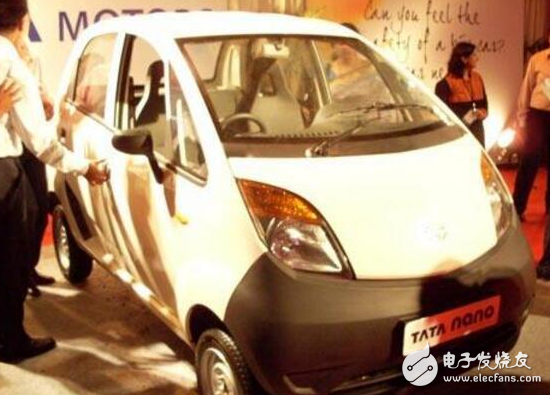
Privacy statement: Your privacy is very important to Us. Our company promises not to disclose your personal information to any external company with out your explicit permission.
According to foreign media reports, India reiterated that it will achieve full coverage of electric vehicles in 2030. The government hopes that this policy will promote auto manufacturers to fully invest in the development of electric vehicles. To this end, India announced that it will order 10,000 electric vehicles.
Indian Prime Minister Narendra Modi plans to turn all of India's new passenger cars into electric cars by 2030. The Indian government’s largest order for electric vehicles has given a company that has not yet begun commercial production of electric vehicles.
This company is Tata Motors Ltd. So far, it has not sold an electric car. However, the company's CEO, Guenter Butschek, said it has a late-comer advantage and its more advanced technology will reduce the cost of the car. Tata will work with Mahindra and Mahindra Ltd. to produce electric vehicles. Mahindra is India's only electric car manufacturer and plans to increase its car production to 5,000 vehicles per month.
In India, 2.5 million fossil fuel vehicles are sold each year. Increasing the output of electric vehicles is only one aspect of the problem, and providing an uninterrupted energy supply is another aspect of the problem. In addition, the severely weak charging infrastructure has further widened the gap between India and China. China is now the world leader in electric vehicles. According to statistics from the International Energy Agency, in 2016, China registered 336,000 new electric vehicles, and the United States has only 160,000 electric vehicles, while India has only 450 electric vehicles.
“The government needs to build a charging infrastructure to make the electric vehicle business model sustainable,” said Ram Kidambi, a partner at consulting firm AT Kearney. “The Indian car company may be in the deadline. There is enough electric car inside. But the question is, what if the car owner does not have a charging facility?"

Turning all the new cars on the market into electric cars in less than 15 years is part of Prime Minister Modi’s plan to support the global effort to tackle climate change. However, in the absence of clear policies and subsidies, this goal is “very difficult to achieve”. Chinese auto companies have received generous subsidies from governments at all levels.
India now has about 350 charging piles, and China has installed 215,000 charging piles by the end of 2016. In India, the full cost of holding an electric car takes about 15 years to be the same as a conventional fuel car. This is also the time frame for India to stop selling fossil fuel vehicles.
Pawan Goenka, general manager of Mahindra, said that the goal of electric vehicles in India seems to be a bit too high. “We have seen more radical development plans in other countries, but they are all milder than the plan to turn all new cars into electric cars by 2030,” he said.
The Modi government hopes to enter the fast lane of development. The government-backed Energy Efficiency Services Corporation (EESL) is preparing to purchase 10,000 electric vehicles from Tata Motors and Mahindra in about four years to replace the oil and diesel-powered vehicles used by the federal government. One of the tasks of energy efficiency service companies is to help countries reduce carbon emissions and control fuel imports.
New revenue sourceShantanu Jaiswal, head of Indian research at Bloomberg New Energy Finance, said electric vehicles have provided new sources of revenue for Indian-powered electricity suppliers, potentially attracting them to actively build charging facilities.
“In places with heavy traffic, it is clear that building a charging station will bring good returns,” said Aywal. “But in rural areas where there are not many electric vehicles, investing in charging piles may not be cost-effective. ”
A study by Indian policymaker NiTi Aayog and the US Rocky Mountain Research Center said that in India, car ownership is still very low, with an average of 18 cars per 1,000 people. In China, this number is 69, and in the United States it is 786. In India, four-wheeled vehicles have a very low holding rate, while two-wheeled vehicles are common. If the demand for electric vehicles increases and the price drops, then Indians will likely jump directly into the electric vehicle sector.
This is the bet of Tata and Mahindra. After developing plug-in hybrid cars Bolt and TIago, Tata began testing its electric buses. Mahindra plans to increase its production by nine times in the next two to three years to 5,000 vehicles per month.
Tata Motors' strategy includes two components: first, selling electric vehicles to government agencies, and second, launching electric buses and trucks that cater to the mass transit market. Tata Motors CEO Bucek said in an interview that both aspects are now ready.
“We have invested a lot in the electric vehicle business, but we rarely talk about it,” he said.
February 13, 2023
February 10, 2023
이 업체에게 이메일로 보내기
February 13, 2023
February 10, 2023

Privacy statement: Your privacy is very important to Us. Our company promises not to disclose your personal information to any external company with out your explicit permission.

Fill in more information so that we can get in touch with you faster
Privacy statement: Your privacy is very important to Us. Our company promises not to disclose your personal information to any external company with out your explicit permission.